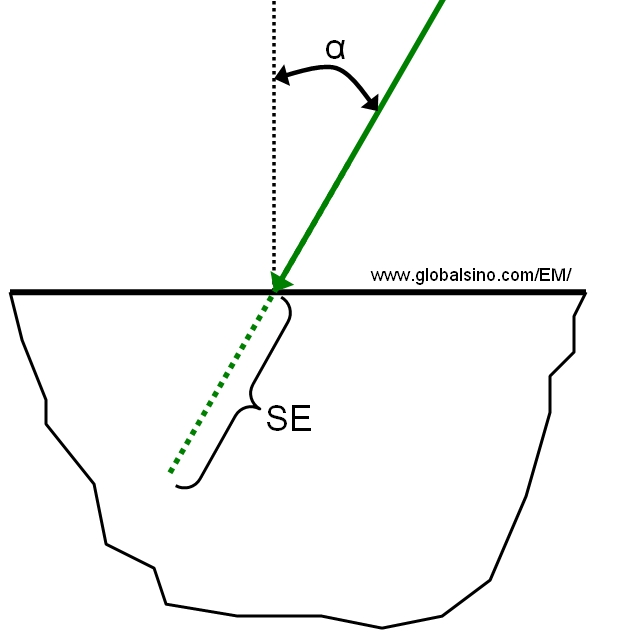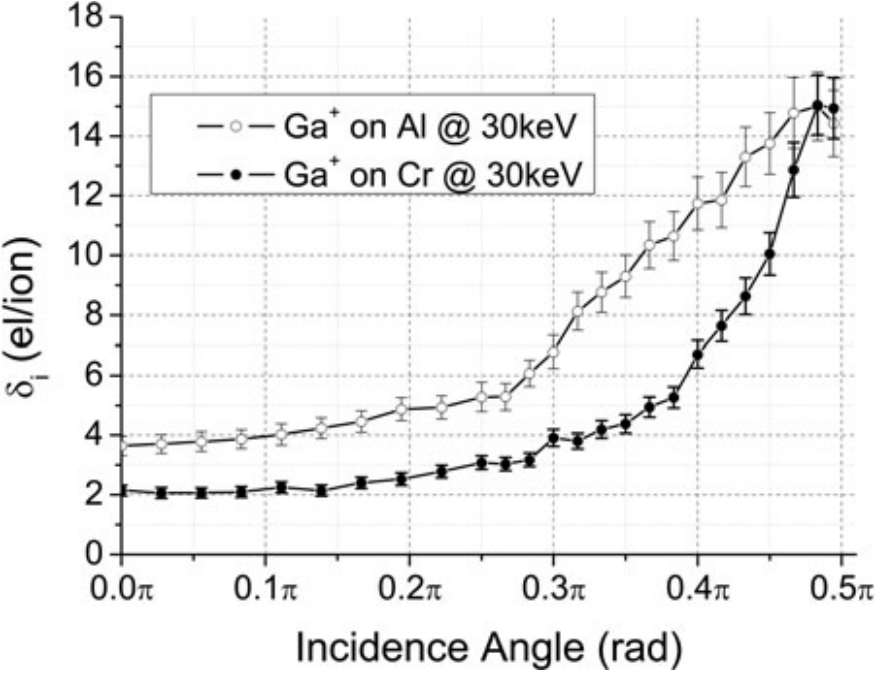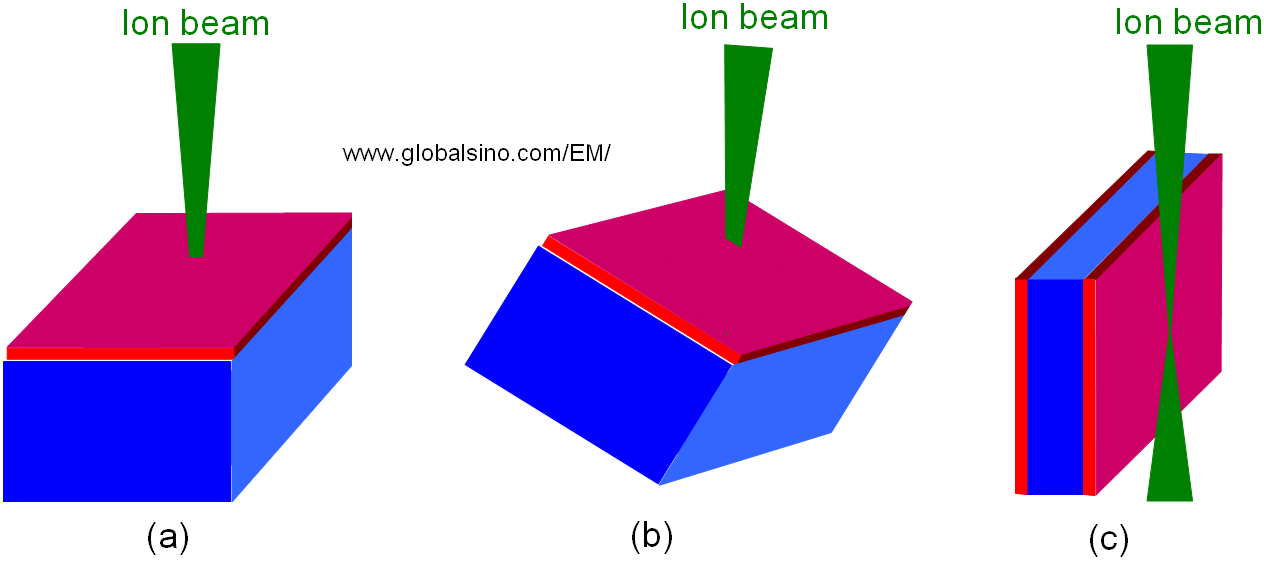=================================================================================
One of the most important properties of the angular dependence of ion-induced secondary electron (SE) emission for ion beams is the SE yield, δi, which is the number of
emitted SEs per incident ion as a function of the angle α formed between the incident beam and the surface as shown in Figure 4797a. It is indicated that more SEs are able to escape the sample surface with larger incidence angles since the generated SEs are shifted closer to the sample surface.

| Figure 4797a. Schematic of ion beam interraction with a surface and generation of secondary electrons. The green dots represent the generated SEs along the ion beam penetration in the sample. |
Figure 4797b shows experimental curves of SE yield δi for Al and Cr flat surface, under the interaction of Ga+ at 30 keV, with sample tilts at the angle α.

| Figure 4797b. Experimental curves of SE yield δi for Al and Cr flat surface, under the interaction of Ga+ at 30 keV, with sample tilts at the angle α. [1] |
In these case where flat samples are tilted and then the milling spot at the probe is at the sample surface, as shown in Figure 4797c (a) and (b), the interaction between ion beam and materials can be considered as single collision. The experimental date shown in Figure 4797b is obtained at single collision conditions; however, multiple collision occurs if a STEM/TEM cross-section is milled as shown in Figure 4797c (c). In the multiple collision cases, SE yield δi becomes N·δi. Here, N is the number of multiple collision events.

| Figure 4797c. FIB milling: (a) at a flat surface, (b) at a tilted flat surface, and (c) at a cross-section STEM/TEM sample. |
[1] Vincenzo Castaldo, Josephus Withagen, Cornelius Hagen, Pieter Kruit, and Emile van Veldhoven, Angular Dependence of the Ion-Induced Secondary
Electron Emission for He+ and Ga+ Beams, Microsc. Microanal. 17, 624–636, (2011).
|